Sudan: I was selling tea when the fighting erupted
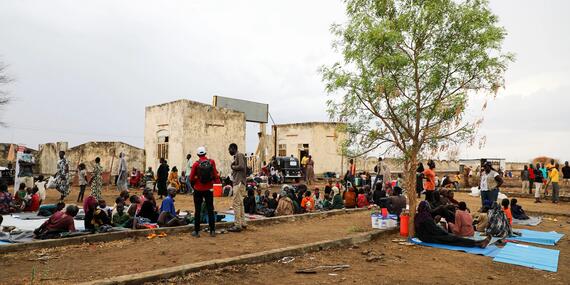
Since fighting erupted in Sudan on 15 April, tens of thousands of civilians have been fleeing Sudan into South Sudan. As of 16 July, 174,509 people have been registered crossing the border from Sudan into South Sudan. Of those, more than 92 per cent are South Sudanese returnees and the remaining are refugees and third-country nationals.
About 75 per cent of those arriving from Sudan are women and children.
The Sudan crisis has further aggravated people’s situation in South Sudan. The influx of refugees and returnees, particularly to places along the border where people were already vulnerable, such as Abyei Administrative Area, Raja County, Aweil North, Aweil East, Renk, and Ruweng Administrative Area, has overstretched the existing capacities of humanitarian partners in these areas which are particularly under-served and difficult to access.
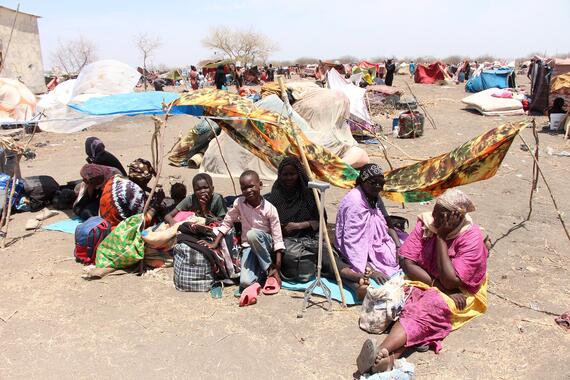
Aluat Deng is among thousands of returnees in Wadwill site, Aweil West in Northern Bahr el Ghazal in South Sudan.
“I was selling tea in the market when fighting erupted in Nyala, South Dafur in Sudan,” recalls Aluat. “I fled and left my three children. I am worried about them; I pray they are safe."
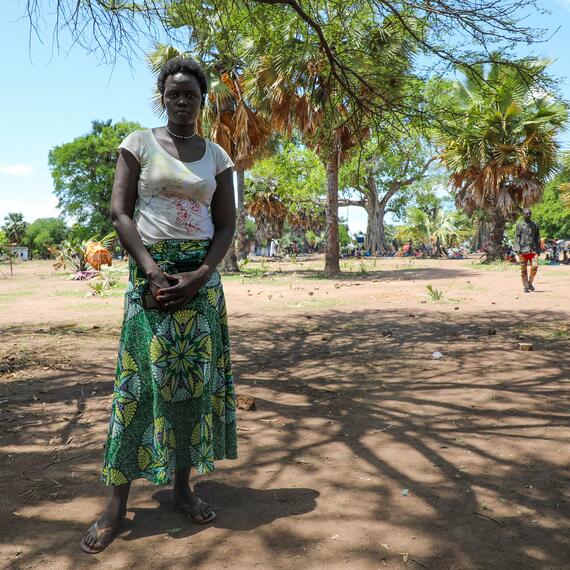
Fighting in Omdurman, Sudan, forced Akuach Lueth and her children to flee to Wadwill in Aweil West County, South Sudan in search of safety. “We lost our belongings to armed men on the road. We have been here for 13 days without shelter. Our situation is difficult. We need help,” she says.
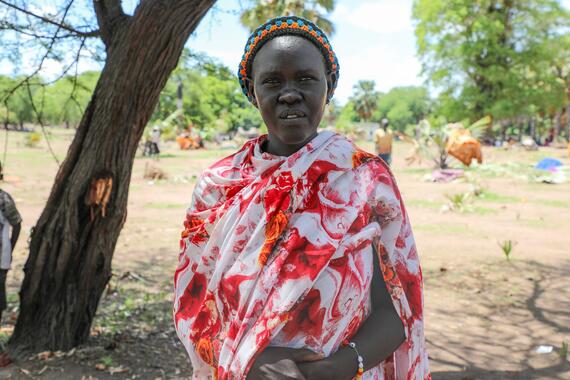
“It was heartbreaking to witness so many people forced to leave everything behind and flee to South Sudan seeking safety,” says Peter Van der Auweraert, the Humanitarian Coordinator ad interim in South Sudan.
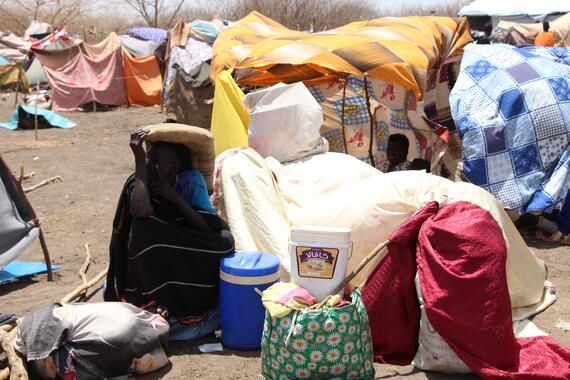
“The Sudan crisis has greatly affected the humanitarian response we are trying to provide for people in South Sudan. It will likely have long-term consequences on the ability of humanitarian partners to respond to the increased number of vulnerable people and their increased needs,” says Mr. Peter Van der Auweraert. Although humanitarian partners have scaled up in response in places along the border that are seeing an influx of people from across the border, there is a shortage of health, water, sanitation and hygiene kits, protection and mental health support.
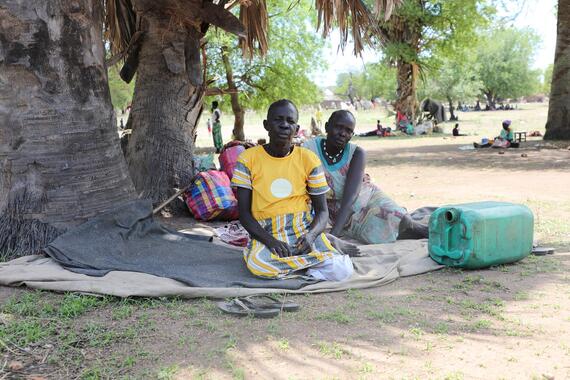
Effects on the cross-border economy
The interconnected nature of the two countries’ economies and supply chains highlights the need for coordinated efforts to address the economic consequences of the conflict and to ensure access to essential commodities for affected people.
The disruption in cross-border trade and humanitarian corridors and breaks in the food supply chains have led to increased prices of food and commodities affecting markets in the area bordering Sudan, and further across in South Sudan. Inflation has increased the cost of the humanitarian response with rising market prices of food and other commodities reducing the ability to reach a larger number of people in need with quality services.
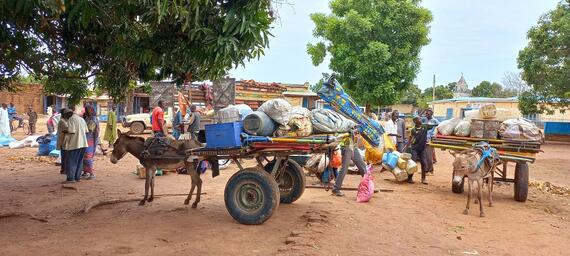
The response plan
On 4 May 2023, UN and partners in South Sudan launched an appeal for US$ 96 million for an emergency response plan (ERP) to assist the people arriving into South Sudan. The plan outlines efforts to provide life-saving support to the most vulnerable. It prioritises supporting the onward movement of returnees, refugees, asylum-seekers, and third-country nationals to avoid congestion at the border crossing points. Once returning South Sudanese reach their settlement destinations, those with humanitarian needs will be covered by existing assistance programmes under the Humanitarian Response Plan, local authorities and community-based support systems.
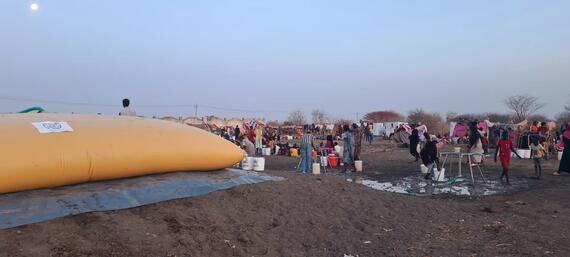
Strain on ongoing relief efforts
From 2019 to 2022, South Sudan has experienced consecutive years of devastating floods, affecting over one million people.
These recurring floods have worsened an already dire situation, leaving people without food and viable land for cultivation. The areas affected by severe flooding are now receiving refugees and returnees from Sudan, further straining the capacity of humanitarian organizations to respond.
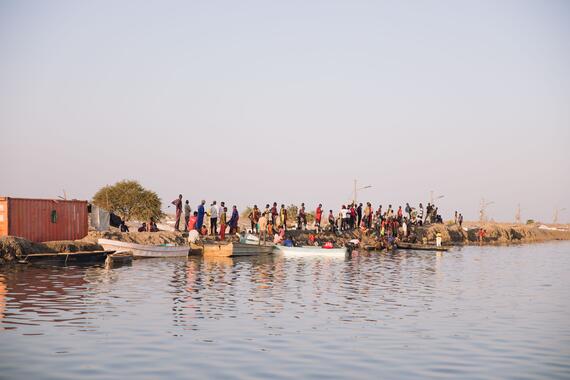
OCHA/Sarah Waiswa
Across the country, pre-positioning of commodities including food, ahead of the onset of the rainy season, which severely hinders road movements has been ongoing. With the onset of the rainy season, the re-prioritization of limited resources to address people’s needs as a result of the impact of the Sudan crisis creates gaps in flood preparedness efforts. Humanitarian organizations have had to re-prioritize limited resources to ongoing and new emergencies and preparedness measures, and this has increased the need for funding.
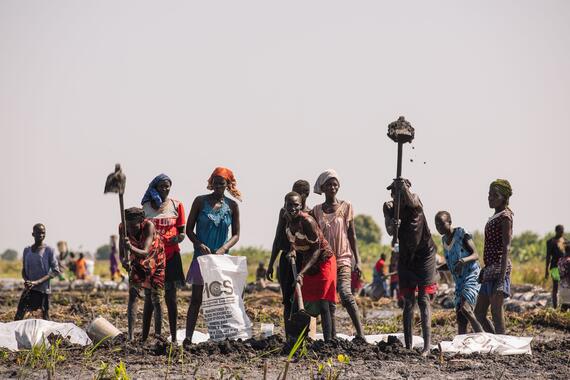
The Sudan crisis has put an additional strain on the already underfunded humanitarian response in South Sudan. The 2023 Humanitarian Response Plan requires US$1.7 billion to reach 6.8 million of the most vulnerable people with urgent vital support. As of 26 June 2023, only 34 per cent of the 2023 Humanitarian Response Plan is reported as funded.
FootnotesText: Krasimira Antimova
